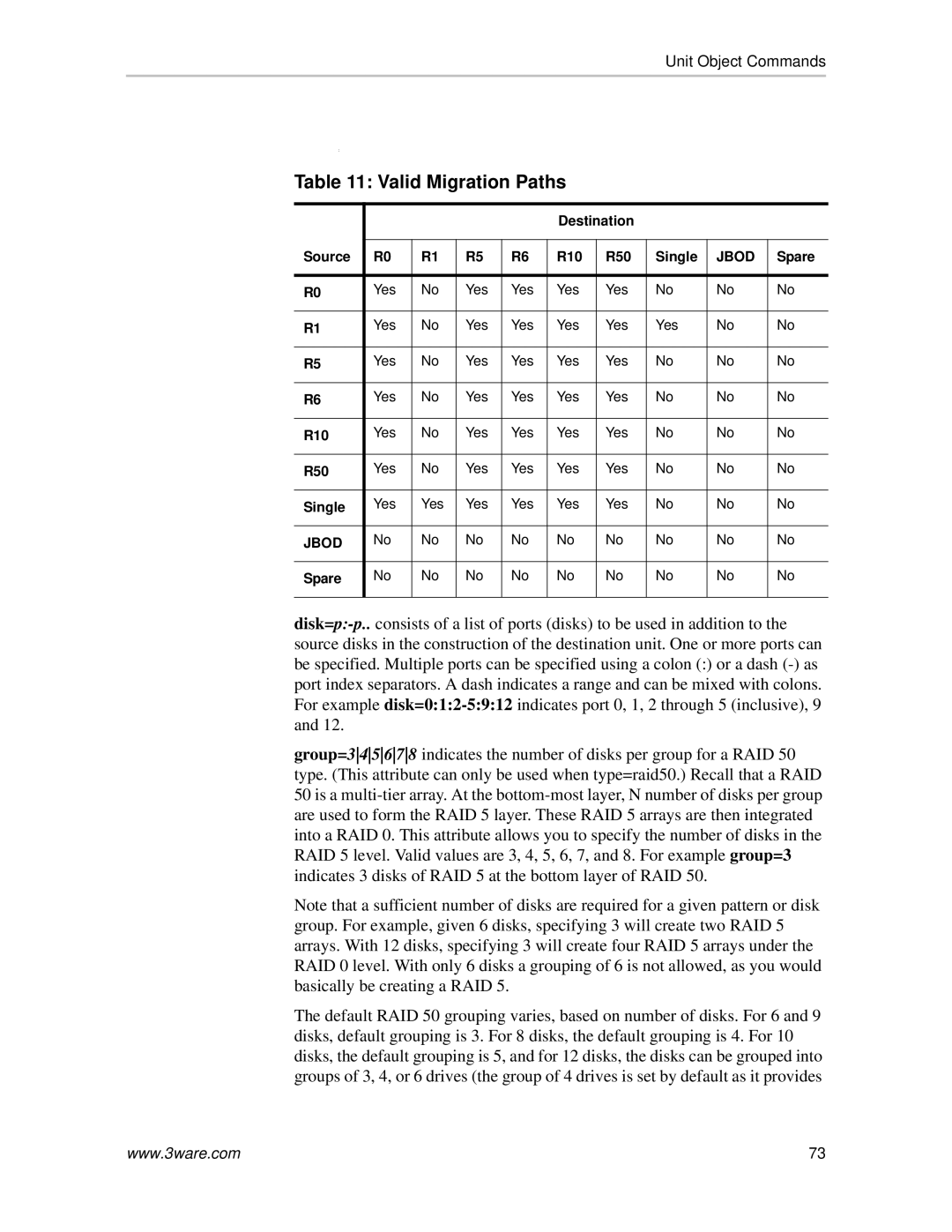Unit Object Commands
:
Table 11: Valid Migration Paths
|
|
|
|
| Destination |
|
|
| |
|
|
|
|
|
|
|
|
|
|
Source | R0 | R1 | R5 | R6 | R10 | R50 | Single | JBOD | Spare |
|
|
|
|
|
|
|
|
|
|
R0 | Yes | No | Yes | Yes | Yes | Yes | No | No | No |
|
|
|
|
|
|
|
|
|
|
R1 | Yes | No | Yes | Yes | Yes | Yes | Yes | No | No |
|
|
|
|
|
|
|
|
|
|
R5 | Yes | No | Yes | Yes | Yes | Yes | No | No | No |
|
|
|
|
|
|
|
|
|
|
R6 | Yes | No | Yes | Yes | Yes | Yes | No | No | No |
|
|
|
|
|
|
|
|
|
|
R10 | Yes | No | Yes | Yes | Yes | Yes | No | No | No |
|
|
|
|
|
|
|
|
|
|
R50 | Yes | No | Yes | Yes | Yes | Yes | No | No | No |
|
|
|
|
|
|
|
|
|
|
Single | Yes | Yes | Yes | Yes | Yes | Yes | No | No | No |
|
|
|
|
|
|
|
|
|
|
JBOD | No | No | No | No | No | No | No | No | No |
|
|
|
|
|
|
|
|
|
|
Spare | No | No | No | No | No | No | No | No | No |
|
|
|
|
|
|
|
|
|
|
group=345678 indicates the number of disks per group for a RAID 50 type. (This attribute can only be used when type=raid50.) Recall that a RAID 50 is a
Note that a sufficient number of disks are required for a given pattern or disk group. For example, given 6 disks, specifying 3 will create two RAID 5 arrays. With 12 disks, specifying 3 will create four RAID 5 arrays under the RAID 0 level. With only 6 disks a grouping of 6 is not allowed, as you would basically be creating a RAID 5.
The default RAID 50 grouping varies, based on number of disks. For 6 and 9 disks, default grouping is 3. For 8 disks, the default grouping is 4. For 10 disks, the default grouping is 5, and for 12 disks, the disks can be grouped into groups of 3, 4, or 6 drives (the group of 4 drives is set by default as it provides
www.3ware.com | 73 |
